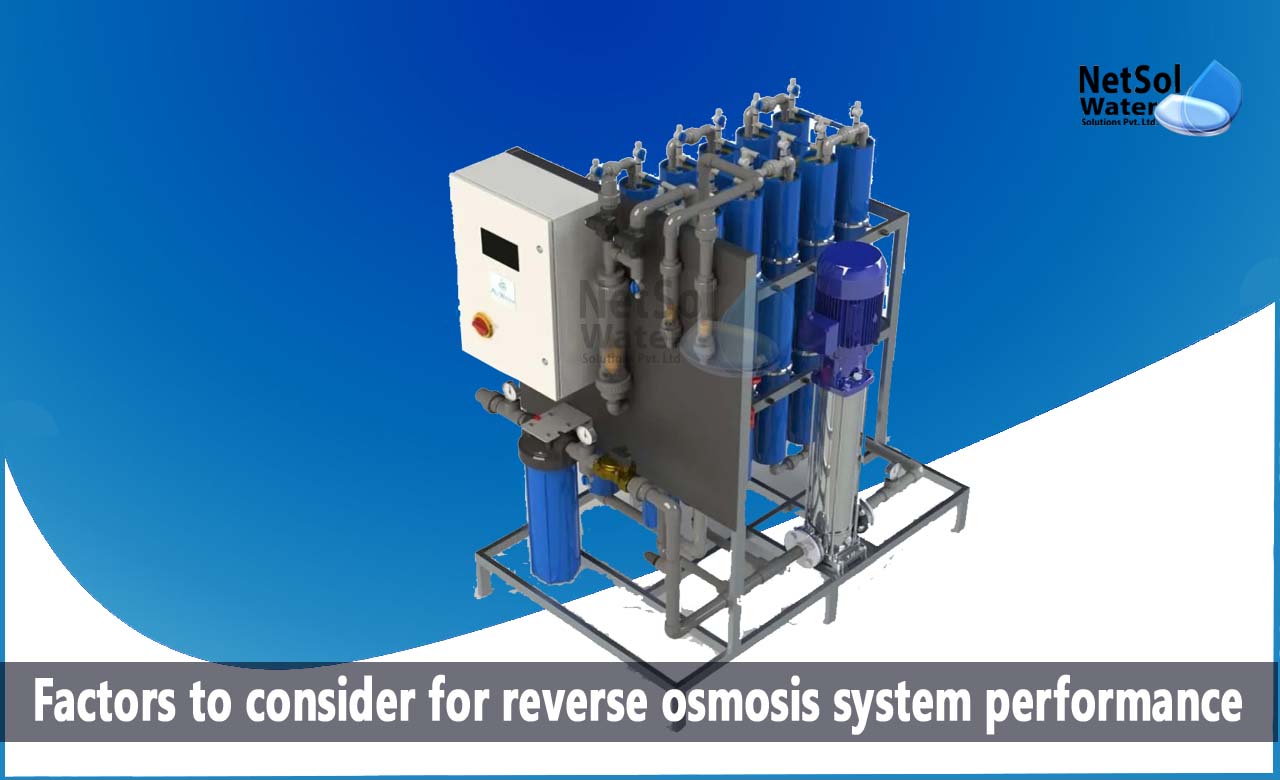Using a semipermeable membrane, reverse osmosis (RO) splits a feedwater stream containing dissolved impurities (salts and organics), into two streams: one with eliminated solids (concentrate or reject) and one with purified water, creating soft permeate water.
The ions and organics in the feedwater are rejected along with the membrane, leaving the permeate with 96 to 98 percent fewer contaminants. Due to the dissolved salts that are still present in the reject, permeate recoveries are often below 75 percent.
Let’s look if the performance of RO Plants is affected by the variation in feed water quality.
Close attention to pretreatment equipment design
Any reverse osmosis operation must pay close attention, to the pretreatment equipment's design to be successful. Sodium regenerated ion exchange is occasionally used as a pretreatment for RO systems, in addition to multimodal filtering for the removal of suspended particles and colloidal. These systems are sized for the hardness of the feedwater, which reduces scale build-up on the RO membranes.
Scale inhibitors are frequently more cost-effective and convenient for the end user, than mechanical softeners. The flow rate of the softener, total hardness (expressed as CaCO3), cost of salt, power, and labour, as well as the price of freshwater and wastewater disposal, can all be factored into a calculating software to examine operating expenses, and help users make the best choice.
What Factors to consider for reverse osmosis system performance?
The differential pressures, normalized permeate flow, percent rejection, and pressure drop coefficient, are the most crucial variables that need to be checked daily. They show the likelihood of fouling and the severity of fouling or scaling, which are the two main reasons for replacing membrane elements too soon.
· Silt Density Index
The feedwater's suspended and colloidal particles are measured on-site using the SDI. It is employed to keep track of how well the pretreatment machinery is working.
Pre- and post-multimedia filters, carbon filters, and post-cartridge filters, should all be used when measuring SDI. In order to give an SDI of less than 3.0 before employing the membranes, pretreatment should be efficiently regulated using the designed flow rates, and differential pressure limitations for backwashing the equipment prior to the RO and replacement of the cartridge filters.
Prior to multimedia filtration, SDI can be reduced with the help of filter aids, increasing filter effectiveness. Professionals should use caution while using cationic filter aids, though.
· Pressure drops in the reverse osmosis system
Water is forced across the membrane surfaces of all the elements by the pressure differential, between the concentrate stream pressure coming off the tail-end elements and the intake to the initial membrane elements.
The hydraulic differential pressure (P) or pressure drop is terms used to describe this. Unless something physically prevents the flow between the elemental membrane envelopes, the P will not change as long as the fluxes and temperature remain consistent. As a result, it's crucial to keep an eye on the “P” at every level of the system.
· Regular permeate flow
One of the most sensitive indicators of trouble in a RO system is normalized permeate flow. The permeate flow rate can be lowered by fouling. However, it is insufficient to measure the permeate flow rate alone, because it depends on the feedwater temperature, feedwater conductivity, feed pressure, and permeate pressure (total dissolved solids, or TDS).
Although, each manufacturer of RO membranes has an equation for calculating the normalized permeate flow, this complex calculation requires a number of inputs, including temperature, net driving pressure, pressure drop, permeate, feedwater TDS, and permeate flow.
· Rejection percentage
Monitoring the permeate TDS is done using percent rejection. Since, dissolved salts are removed by RO systems, monitoring salt (ion) rejection is a direct indicator of performance.
The amount of TDS from the feedwater that has been eliminated in the permeate water, is known as salt rejection. The simplest technique to track salt rejection is to measure the conductivity of the feedwater, and permeate water because many facilities don't monitor TDS.
Manufacturer of high-quality RO Plants
Since every project is different, our experts at Netsol Water can assist you in selecting the most effective technique, such as commercial and industrial RO Plants for treating water in the best way.
Netsol Water is Greater Noida-based leading water & wastewater treatment plant manufacturer. We are industry's most demanding company based on client review and work quality. We are known as best commercial RO plant manufacturers, industrial RO plant manufacturer, sewage treatment plant manufacturer, Water Softener Plant Manufacturers and effluent treatment plant manufacturers. Apart from this 24x7 customer support is our USP. Call on +91-9650608473, or write us at enquiry@netsolwater.com for any support, inquiry or product-purchase related query.



